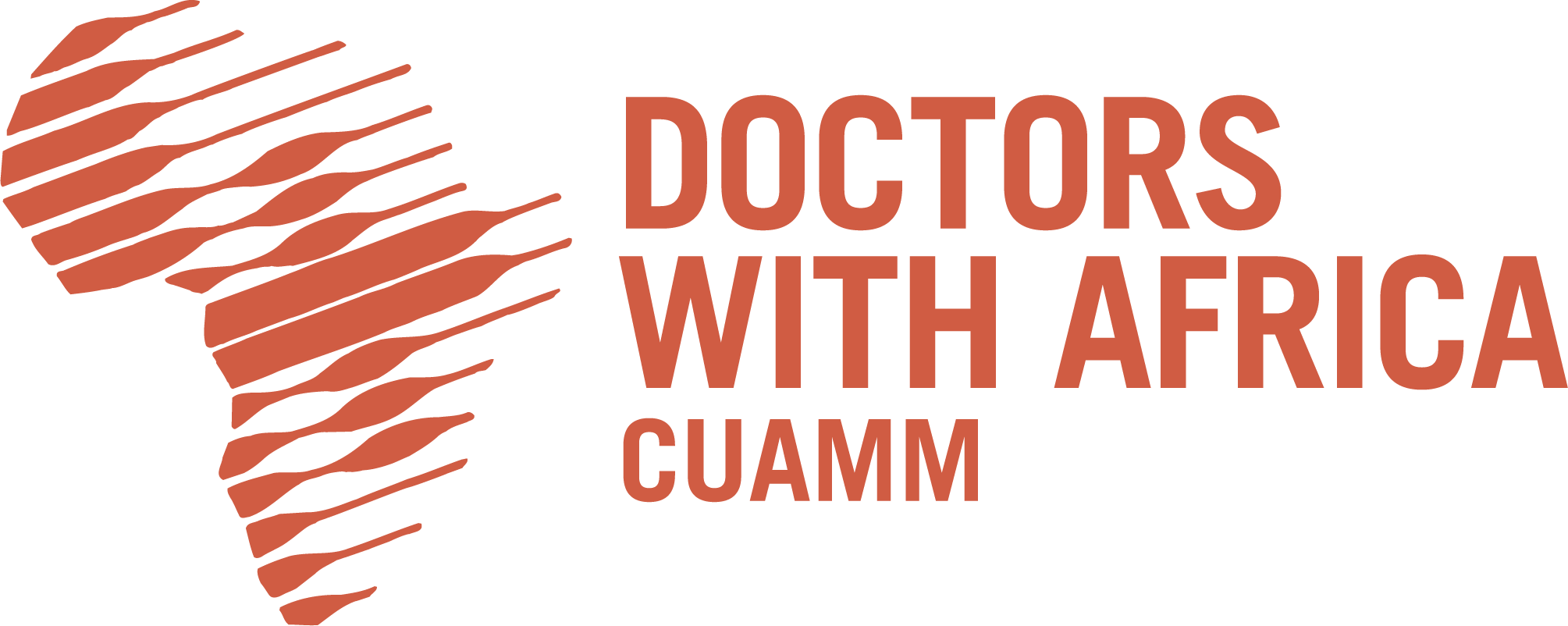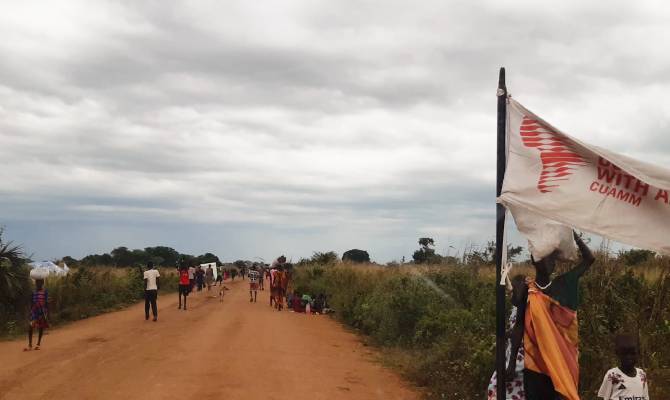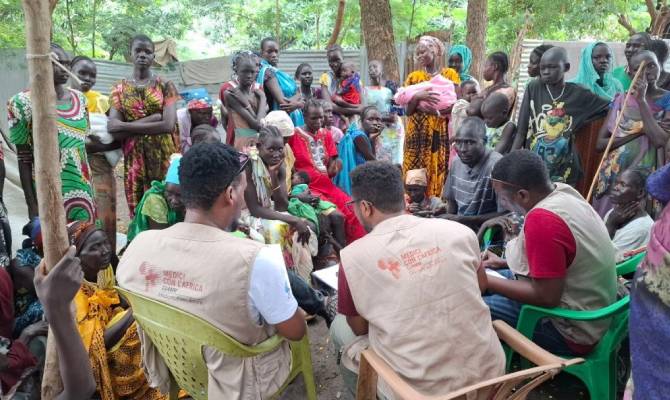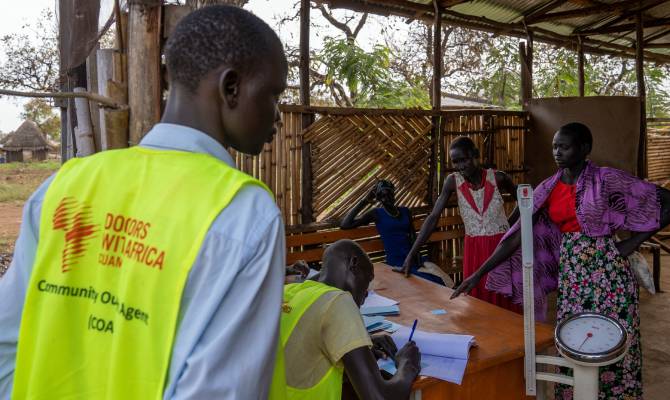Along the road between Muon and Gade, in Wantawo District, hundreds of people walk under the sun carrying what little they own. Most are South Sudanese refugees who have recently crossed into Ethiopia. According to estimates, some 50,000 to 70,000 people have recently fled conflict and hunger.
We follow them as they move toward Gade, where a registration point has been established. Being registered is essential for refugees to be relocated to camps and to access basic services, including health care. As of 5 October, 20,550 refugees have been registered, 14,477 refugees currently reside in Luakdong camp while remaining refugees are living in overcrowded or adverse conditions in Muon, Matar and Gade.
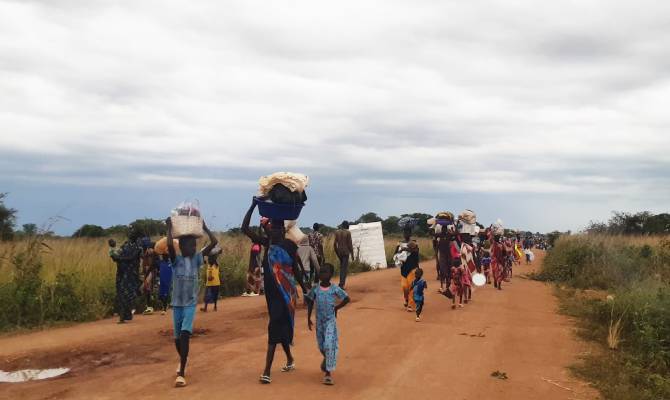
“In response to the recent surge of emergency arrivals from South Sudan, CUAMM has expanded its work to the northwest, launching an emergency intervention in Wantawo District. We are currently adddressing the first and most urgent needs in Gade and Moun and will soon move our intervention to Loak Dong camp. From the very first hours, we have been working alongside local health authorities and international partners to ensure refugees have rapid access to life-saving health services.” said Luisa Gatta, CUAMM Country Manager.
From Monday to Saturday, two CUAMM mobile health teams travel between Gade and Muon to provide essential health services. The teams include health officers, nurses, a midwife, a pharmacist, and a project officer, supported by community outreach agents — South Sudanese refugees themselves — who play a vital role in connecting the community with the services provided.

The services offered include outpatient consultations, treatment for children under five, and antenatal care for pregnant women. On their very first day of service, 250 people, including 80 children, received medical assistance from CUAMM’s teams. Since most of the new arrivals are women and children, maternal health care and nutritional support have become urgent priorities in the Gambella region.
“Ensuring that health services are available where needs are greatest is vital,” explained Luisa Gatta. “Many people in distress have no means of accessing care elsewhere, as they simply cannot afford the cost of an ambulance ride to Gambella Hospital.”
The Nyinenyang Primary Hospital is the main referral facility in the area, yet it lacks even the most basic infrastructure: no running water, no operating theatre, and no blood bank. Oxygen and fuel for the generator and ambulances must be supplied from Gambella, about four hours away.
There is also no formal referral system between the two facilities, meaning patients must pay for transport themselves — an impossible cost for most families arriving with nothing.
“The gap between resources and needs is widening. We must foster new partnerships and mobilize greater support to ensure that no one is left behind,” stressed Giuseppe Valerio, CUAMM Regional Partnership and Advocacy Manager.
Ethiopia currently hosts more than 1.1 million refugees, one of the largest refugee populations in the world. Displaced families are crowded into makeshift shelters with inadequate sanitation, poor nutrition, and limited medical care—creating a perfect storm of vulnerability and heightened risk of disease and death.
At the same time, the country is grappling with multiple, overlapping crises: cholera, measles, and malaria outbreaks, alongside relentless conflict that continues to erode the public health system. Entire communities remain cut off in hard-to-reach areas with little to no humanitarian access, leaving them in desperate need of life-saving assistance. These challenges are compounded by soaring malnutrition rates, driven by severe food insecurity.

As humanitarian needs continue to rise, international funding has dropped to critically low levels. Despite CUAMM’s sustained efforts, the needs remain immense. More medicines, medical supplies, and trained health professionals are urgently required to strengthen the response and improve service delivery.
While CUAMM’s mobile health teams provide timely access to primary care in remote areas, reinforcing local health facilities remains crucial to ensure the quality, continuity, and sustainability of care.
DONATE TO SUPPORT THE EMERGENCY RESPONSE
